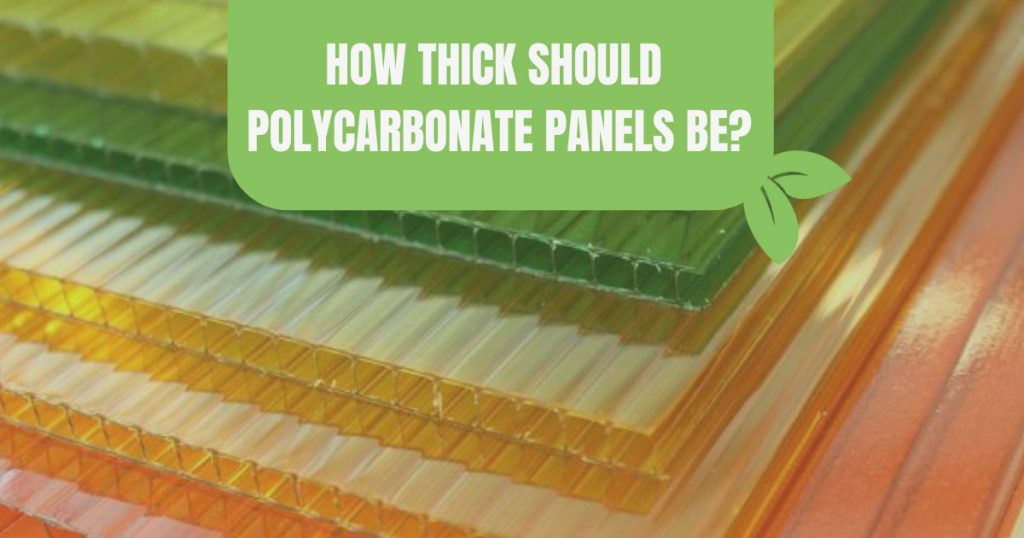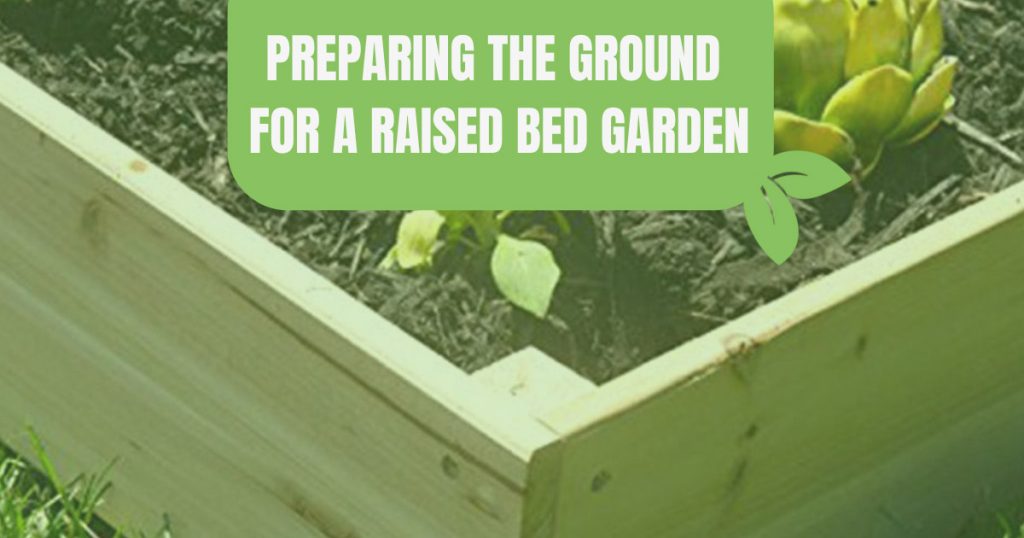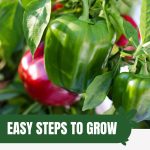

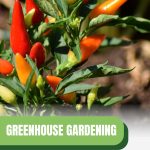
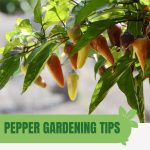

When it comes to greenhouse gardening, it’s no secret that one of the biggest benefits is being able to grow heat-loving plants. If you live in an area with a short growing season or notoriously cold spring nights, it might be a challenge to grow pepper plants outdoors. Luckily, you can grow peppers successfully in a greenhouse in almost any climate!
The key to growing peppers in a greenhouse is providing them with the essentials: light, heat, space, nutrients, and water. If your pepper plants receive an adequate supply of all of these (and not too much), they’ll develop quickly and provide you with plenty of delicious fruit!
Growing peppers in a greenhouse is sure to satisfy everyone’s desire for peppers fresh from the garden, whether mild and sweet or spicy hot. In this article, we’ll provide you with all of the information necessary to grow a delicious batch of peppers. We’ve also included some of the most popular varieties that you can start growing at home!
What are peppers?
Pepper plants are of the genus capsicum and the nightshade family Solanaceae. They are a flowering plant grown extensively for their diverse fruits that range from mild and sweet to unbearable spicy.
A pepper’s spice level is measured on the Scoville scale, with sweet bell peppers at the bottom and the world’s spiciest chilies, including the Ghost Pepper and the Carolina Reaper, at or near the top.
Peppers are native to the Americas, though they are now cultivated all around the world and used in many cuisines, including Mexican and Indian cuisines. This tender, warm-season crop is a great source of minerals, vitamins, and antioxidants. So let’s find out how you can start growing them today!
Quick overview of growing peppers in a greenhouse
- Type: Warm-season crop
- Time from seed to harvest: 60-90 days
- Germination temp: 70-95°F
- Time until first emergence: 7-10 days
- Best temp to grow: 70-80°F
- Height: 1-3 ft
- Spread: 1-3 ft
- Light: Full sun (6-8h)
- Grow from seed: 1/4-1/2 in deep; thin to 12-24 in spacings
- Companions: Tomatoes, carrots, onions, basil, cilantro
- Keep away from: Kale, broccoli, cauliflower, Brussels Sprouts, cabbage, collards, fennel, kohlrabi
How to grow peppers in a greenhouse
Unless you live in an area that has a long, warm growing season (at least three months), growing pepper plants can be a challenge. Luckily, greenhouses are an incredible tool for extending your growing season no matter where you live. Even if your natural growing season is already quite long, you could lengthen it with a greenhouse and grow peppers practically year-round!
As with most plants, there are two methods to grow peppers in your greenhouse: from seed, or from starts. Starting your peppers from seed allows for more choice and control, while buying starts from a nursery cuts down on time. Keep reading to find out which technique is right for you!
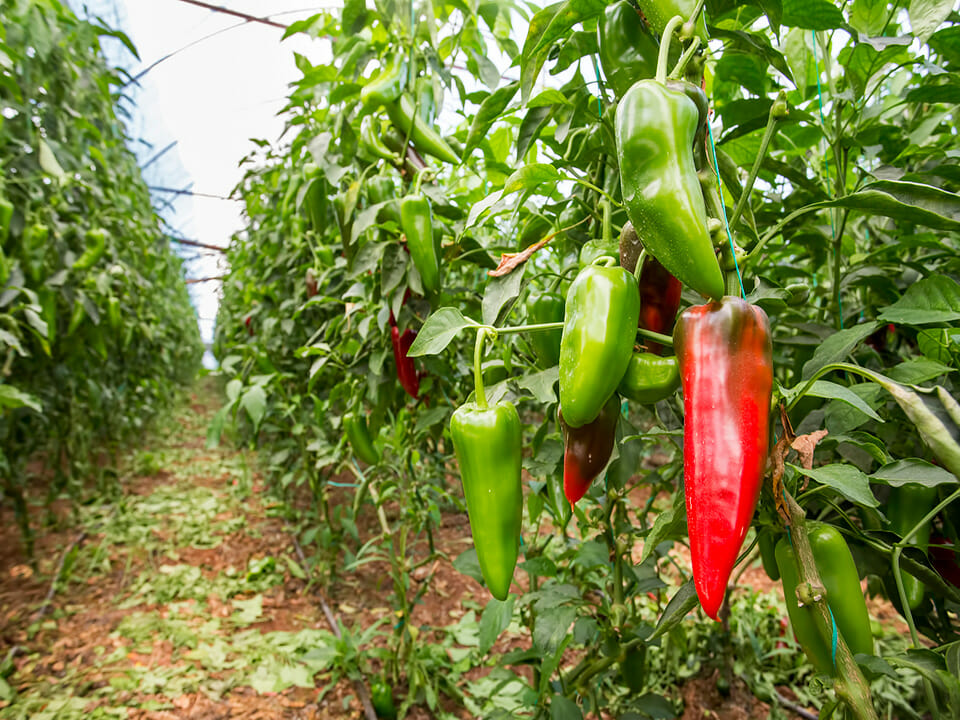
Growing peppers from seeds
There are hundreds of different varieties of peppers, all with unique flavors, spice levels, colors, shapes, and more. One of the main benefits of growing your peppers from seed is the ability to choose any variety (as long as you can find the seeds). Seed companies such as High Mowing Organic Seeds specialize in sourcing unique varieties that you’ll likely never find in a store.
However, growing peppers from seeds requires some skill and plenty of patience. Don’t be discouraged if your first patch of plants isn’t perfect! Peppers, especially hot peppers, are notoriously stubborn sprouters and could take anywhere from 1 to 4 weeks to sprout depending on the soil temperature and conditions.
One way to maximize your chances of success the first time you grow peppers from seeds is also buying a handful of nursery starts (which we’ll go over shortly). Luckily, there are a number of steps you can take to increase the likelihood that your seeds grow into strong pepper plants that bear plenty of fruit.
Tips for planting pepper seeds:
- You can plant your pepper seeds in any kind of seedling tray. For the best results, plant 2-3 seeds per every one plant you want to end up with. Even if they all sprout, you’ll end up picking the strongest seedlings, so don’t worry about planting too many seeds.
- Plant your pepper seeds no more than ½ inch deep into your potting soil.
- Make sure the soil is moist but not soggy, and cover the tray to trap the heat and moisture.
- Peppers can take anywhere from 1-4 weeks to sprout, so don’t be discouraged if they don’t appear right away! Water the soil whenever it starts to dry out.
- For best results, make sure the soil temperature is at least 70°. You can easily increase or control the temperature using a seedling heat mat.
- Once the seedlings start to appear, remove the cover and make sure they’re receiving plenty of light.
- As soon as the seedlings’ first set of true leaves appear, fertilize with a ¼ strength solution of fertilizer. At this point you can thin your seedlings to the strongest ones.
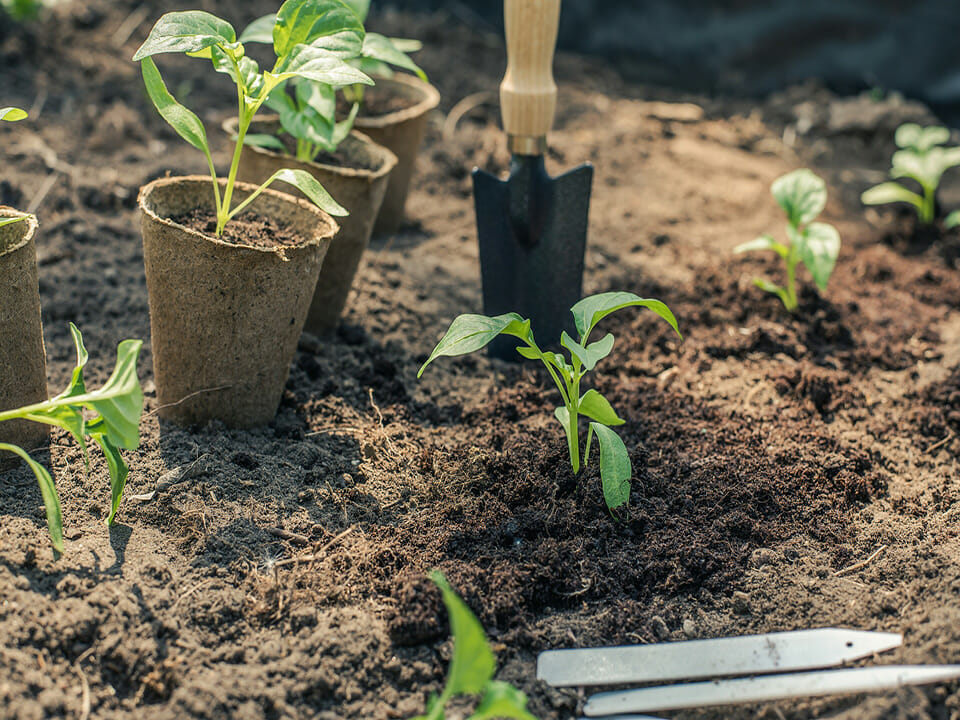
Tips for transplanting your pepper seedlings:
- Now you can start transplanting your seedlings up to a bigger container. You can actually do this several times before planting it in its final container or bed.
- For the final planting, keep the pepper plants about 18” apart for optimal spacing.
- Peppers do best in deep soil with plenty of organic matter and an adequate supply of calcium and phosphorus.
- Now it’s time to let them grow! Keep reading to learn more about caring for your pepper plants.
Make sure to buy all the necessary planting supplies! Check out these planters, pots, and benches, and improve your harvest with this RSI Hydroponic Floating Seedling Tray.
Growing peppers from nursery starts
If you’re nervous about starting your pepper plants from seeds, you can skip that step and instead source healthy pepper starts from your local nursery. Although there won’t be as many unique varieties to choose from, you’ll still be able to pick from various mild and hot varieties.
Growing peppers from nursery starts is a reliable and fast method for growing healthy pepper plants in your greenhouse. This makes it an especially great option if you’re getting a late start on the season and you’re running out of time to grow this warm-season plant.
Keep in mind that you’ll have less control over the plant’s early growing environment, so make sure to try and source your pepper starts from a local nursery that uses organic growing methods. Plus, you might not get as much satisfaction from growing your pepper plants from starts as you would from seed.
That said, it’s a great and reliable option for growing delicious peppers in your greenhouse! To grow peppers from nursery starts, simply plant the starts in their final growing position (with about 18” of spacing per plant) and provide them with plenty of light, water, and nutrients!

How to take care of pepper plants in a greenhouse
Growing peppers in a greenhouse can be incredibly rewarding, but because they are heat-loving plants, you have to make sure that their growing environment matches their requirements. Fortunately for you, taking care of pepper plants is similar to growing other warm-season crops in your greenhouse.
Watering
Peppers require plenty of moisture to thrive, but they don’t like to be in soggy soil. You can check the soil moisture by simply feeling the top 2”. If it feels dry, it’s time to water. If the soil is still moist, hold off in order to avoid overwatering your sensitive peppers.
When temperatures rise, you may need to water your pepper plants daily. Ideally, water them adequately and consistently to avoid any unnecessary stress. You can install watering systems in your greenhouse to cut down on your effort, but make sure to keep an eye on the soil and adjust as necessary.
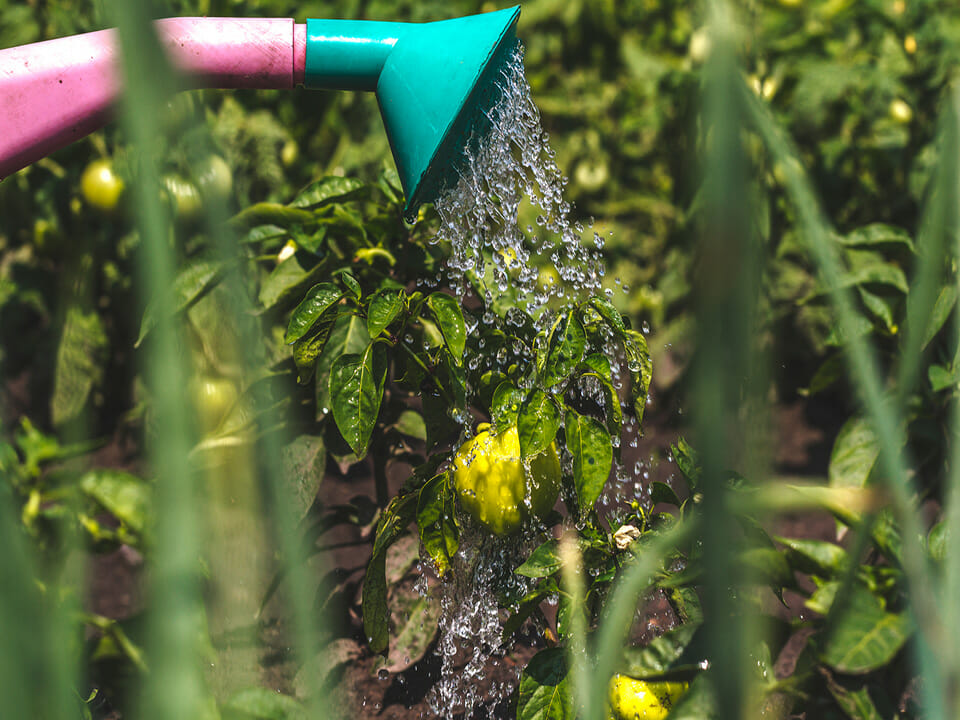
Best soil conditions
Your pepper plants will grow best in nutrient-rich soil with adequate calcium and phosphorus. The ideal soil pH should be between 6.0 and 7.0, while the optimal soil temperature is at least 70°F.
When your pepper plants begin to bloom you should start applying a foliar feed roughly every 10 days. This will ensure your plants are healthy and produce large, juicy fruits. However, keep in mind that excessive fertilizing can be damaging, so make sure to follow the proper dilution ratios on your fertilizer’s packaging.
Lighting
Your pepper plants require plenty of consistent light throughout their life in order to thrive. Choose a spot in your greenhouse that gets at least six hours of direct sunlight every day. You can supplement with artificial grow lights if your plants aren’t receiving enough natural light.
Temperature
Since peppers are heat-loving plants, you need to make sure that your plants are in a warm greenhouse. Pepper plants grow best with a daytime temperature of at least 65°F to 70°F and 60°F to 65°F at night. Do your best to maintain these temperatures in your greenhouse, especially if your climate is much cooler.
Diseases and pests to watch out for
Pepper plants can attract a variety of pests that will go for their fresh green leaves and juicy fruits. Snails, slugs, aphids, and flea beetles are all common pests to keep an eye out for.
To avoid infestation by most insect pests, make sure to practice crop rotation. Don’t grow the same type of plant in the same place two seasons in a row; rather wait at least 3 to 4 seasons to break up the pests’ natural life cycles.
To remove superficial pests such as aphids, simply blast them off with a powerful water hose. Be mindful not to do this too often to avoid damaging your plants’ leaves or soaking the soil, and avoid using this method on fragile seedlings.
Finally, birds are notorious for stealing peppers even before they’re ripe! Luckily, if you’re growing your peppers in a greenhouse you’ll likely avoid having to deal with birds unless you often leave doors or windows open. If this is the case, simply cover these openings with a mesh screen to prevent their access.
Check out our guides for dealing with snails and slugs, as well as aphids!
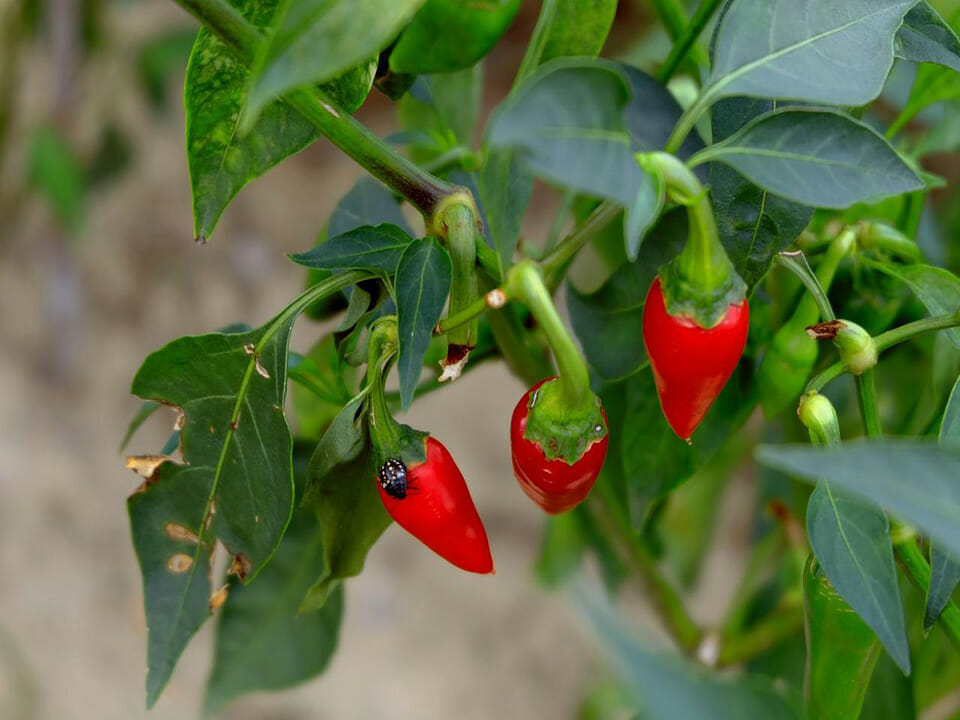
Harvesting your ripe peppers
Harvesting peppers is fast and simple. Simply harvest your peppers when they have reached the desired color/maturity. To avoid breaking the fragile parts of the peppers, use scissors, pruners, or a sharp blade to cut the stem away from the plant.
Use gloves or clean your hands with soap and water after harvesting hot peppers. Never rub your eyes or face to prevent burning your eyes!
Why aren’t my pepper plants producing fruit?
Okay, so you’ve planted your pepper plants, given them plenty of water, nutrients, and sunlight, and watched them grow. They’ve started flowering, but very few fruits are forming, or none at all. If this sounds familiar, you’re not alone!
In fact, one of the most common issues that greenhouse gardeners experience when growing pepper plants is fruit failing to form. Although multiple reasons could explain the lack of fruit, it usually comes down to two big factors: over-fertilization or lack of pollination.
Peppers don’t like too much fertilizer. Although nutrients help form fruits and increase yields, too much of them can cause quite the opposite. So don’t over-fertilize your peppers! If you suspect that this is the cause of your problem, water them excessively to flush out more nutrients from the soil (the pot should drain well for this to work).
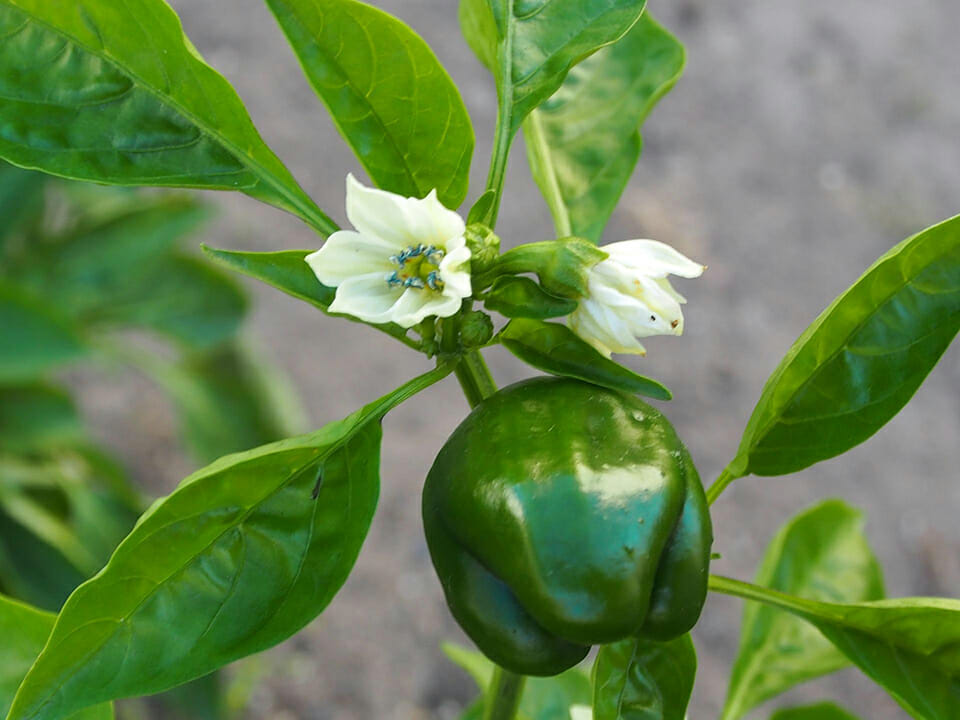
Peppers are one of the roughly 80% of flowering plants that rely on pollinators such as bees and butterflies to form fruit. Although pepper flowers are technically self-pollinating (meaning each flower contains both the male and female parts necessary for reproduction), they still rely on pollinators or wind to be fertilized and form fruit.
Often, a greenhouse lacks both pollinators and wind. Luckily for you, there are a few things you can do to boost your chances of pepper-growing success:
- Using an electric toothbrush or a specially designed VegiBee Garden Pollinator, gently vibrate each flower to stimulate the male part of the flower to release its pollen.
- Install a fan to simulate wind in the greenhouse (this has the added benefit of increasing ventilation!).
- Gently shake each plant to encourage pollination, making sure not to break or damage the plant.
- Open up your greenhouse to invite pollinators inside! Alternatively, purchase beneficial pollinators and release them in the greenhouse.
Repeat these steps as necessary while your pepper plants are flowering to increase the chances that healthy fruits will form!
Popular pepper varieties to choose from
There are hundreds of unique pepper varieties that you can choose from when it comes to growing them at home. You can find out more about different varieties by browsing through seed catalogs, or asking other gardeners in your area for their favorite varieties to grow.
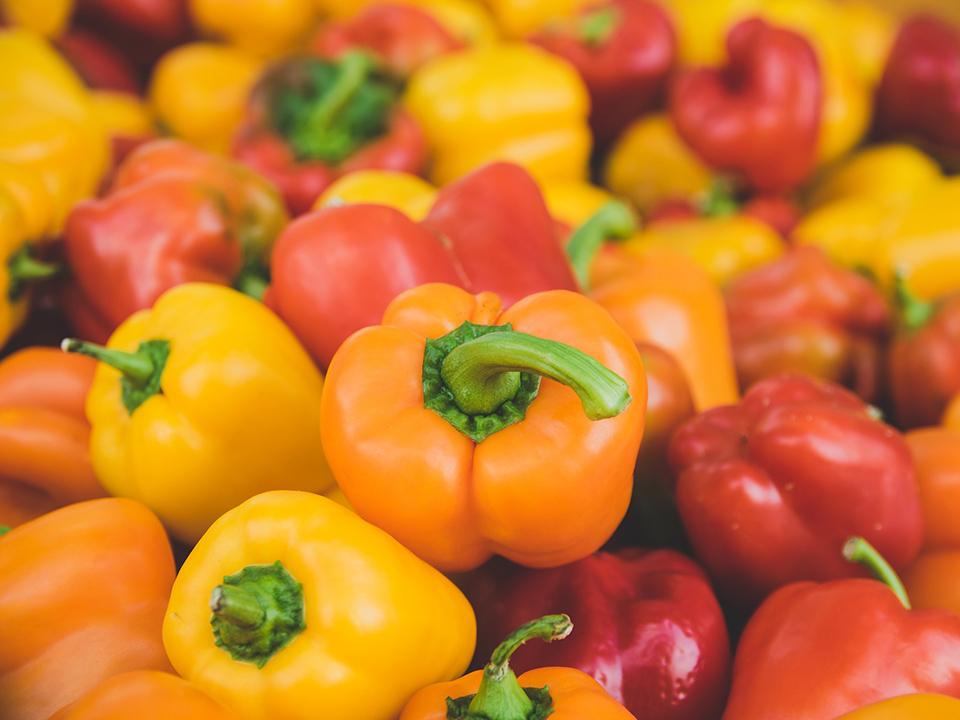
That said, here are a few popular varieties that you can try growing in your greenhouse today:
Sweet pepper varieties
Sweet peppers are mild, non-spicy peppers that are commonly grown for their culinary uses. Prepare your sweet peppers in salads or a stir-fry!
Bell peppers
Probably the most well-known sweet pepper is the bell pepper. They are large, sweet, and juicy, and are available in a range of colors. Green bell peppers are actually under-ripe fruits, which will become yellow or red as they ripen. Bell peppers are ideal for salads or on top of pizza!
Banana peppers
The banana pepper (also known as the yellow wax pepper) is a medium-sized sweet pepper that ranges from pale green to bright yellow in color. Although not as well-known as bell peppers, they have a variety of uses including pickling!
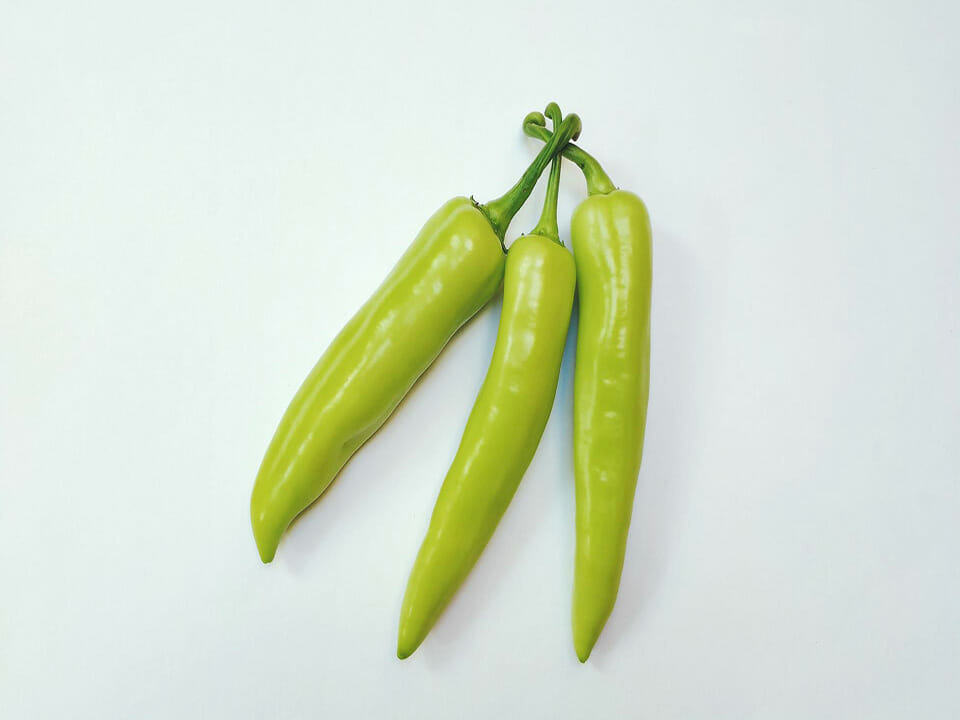
Hot pepper varieties
If you’re looking for some spice in your life, then hot peppers might be for you! Hot peppers are great for adding heat to any dish, but be careful not to make your food overly spicy!
Cayenne
Cayenne peppers are small, long, and thin. They can be quite spicy, so test the peppers by taking a small taste (if you dare). These brilliant red chilis can be eaten raw, cooked, or powdered.
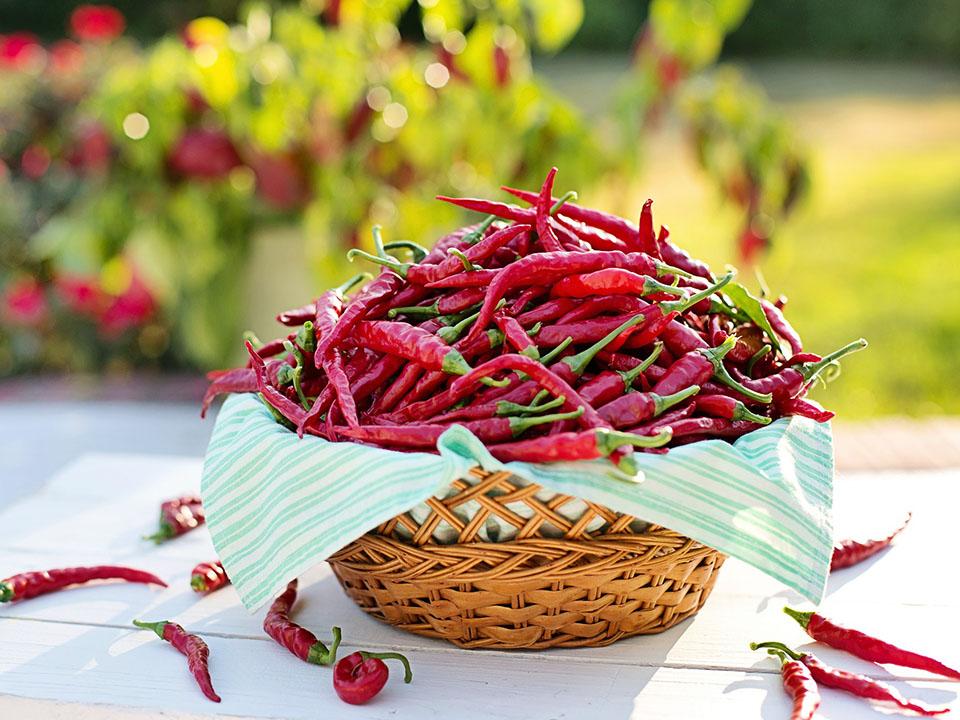
Jalapeño
Savor the green or red jalapeño packed with cream cheese for a spicy yet creamy feast! Jalapeños offer a great punch of heat without being as spicy as some other chilies. You can turn down the spiciness by extracting the seeds before cooking.

















